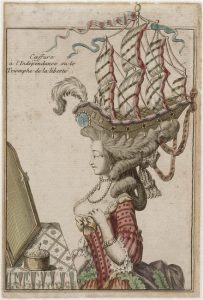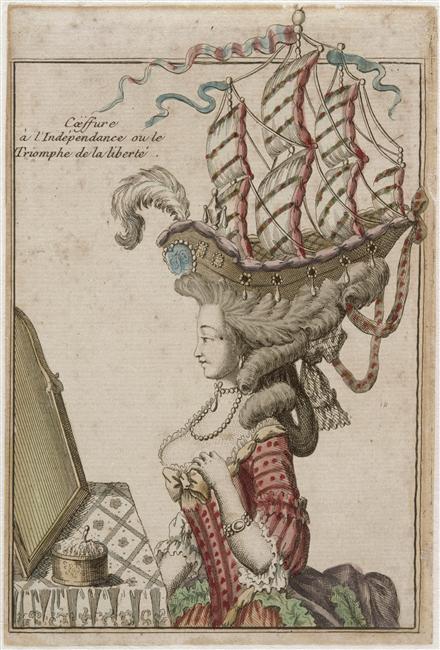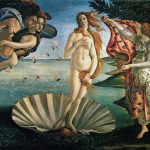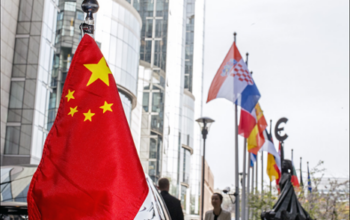Fashion is often undermined and labeled superficial, concepts such as trends and style are considered temporal and inconsequential. But if clothes transmit a message, shouldn’t they be as important as words? In that case what kind of messages are we buying? And what kind of messages are we transmitting?
We often hear: “Don’t judge a book by its cover.” Indeed, there is a lot more that can be said by reading it rather than by only looking at it. Nevertheless, excluding the importance of the outside appearance would be a mistake.
Everyday we wake up and prepare ourselves to go out in the world. This decision might be conscious or unconscious, but a decision nonetheless. Occasions and people are carefully considered in order to obtain the perfect outfit. A blazer means professional, red sensual or confident and even those Sunday lazy pants, that we are all so embarrassed about, are telling others something: we couldn’t care less.
Fashion is often undermined and labeled superficial, concepts such as trends and style are considered temporal and inconsequential. But if clothes transmit a message shouldn’t they be as important as words? In that case what kind of messages are we buying? And what kind of messages are we transmitting?
Thinking of fashion as an act of language, we can analyze the process of dressing oneself as a discourse and as a performance. As if the act of using clothes is indivisibly telling and being. Each moment is a different play where we choose who we want to be and what we want to say, just by the way we dress. For instance, a knight wouldn’t be a knight without his shiny iron armour and pointy, lethal sword.
Susanna Schrobsdorf pondered Hillary Clinton’s clothing choice : ”You can trace her rise and fall in white pantsuits. She wore white to accept the Democratic nomination, at her last debate and then, finally, at the Inauguration of Donald Trump, where it was anything but the white of surrender”––the conscious use of a contrasting colour in a, usually, “all-dark-suit” environment portraits Hillary as daring and brave, poised and calm. However the story behind the outfit is not only about who’s wearing it or the combinations of elements and colours but, also about how the combination of the entity and the outfit are interacting with the surrounding environment.
This means that, especially in a political environment, fashion discourses can also be manipulated and altered to the benefit or detriment of an idea or of someone. An example of this is the research done by Cambridge Analytica during Trump’s presidential campaign. People buy clothes which they identify themselves with. So through algorithms on social media, based on fashion and music preferences, a personality estimation chart was made. Wrangler, Hollister and Lee buyers were linked to low levels of openness and mistrust and, therefore, easier to engage with pro-Trump advertisement. They were, then, targeted and bombarded with such. In the end “customers and voters are the same”, either wearing a specific brand or voting for someone, they are buying into the same (identification) message.
 The president of the United States wasn’t the first to use fashion as a resource of power. Long before him, Louis XIV gave France the fashionable image by which is still known today. While before, Spain had been the European hegemon, the king of France took that place investing in art, theater, music, innovation and fashion, role that he legitimized around the court of Versaille. About 3,000 to 10,000 people were present at the palace everyday, including nobles and artists from all over the world, both eager to know the latest trends as well as be part of the class of influencers, which made them perfect foreign affairs audience.
The president of the United States wasn’t the first to use fashion as a resource of power. Long before him, Louis XIV gave France the fashionable image by which is still known today. While before, Spain had been the European hegemon, the king of France took that place investing in art, theater, music, innovation and fashion, role that he legitimized around the court of Versaille. About 3,000 to 10,000 people were present at the palace everyday, including nobles and artists from all over the world, both eager to know the latest trends as well as be part of the class of influencers, which made them perfect foreign affairs audience.
Le Roi Soleil was indeed the first to introduce fashion templates portraying the ridiculously lavish noble attire, crafted with silk, velvet, pearls, ruffles and vivid colours. Attires and accessories would change according to season and to the occasion, which meant that in the same day a noble would have changed a minimum of four times. Even the act of dressing and undressing the king was ritualized as symbol of status and power. Fashion journalist Alexander Fury stated: “His courtiers spent so much time dolling themselves up, chasing after the rights to wear red heels and remove the king’s chemise at night, that they couldn’t think about overthrowing him”
By showcasing Versailles as the cultural European centre, Louis XIV re-enforced and spread the discourse of a new and glorified French identity, nationally and internationally.
Another example of enhancing political power through fashion is set by Queen Victoria during her reign. The strict moral values of the time were a blueprint of every outfit composed of tight corsets, high turtle necks and long sleeves. Due to the queen’s grief for the loss of prince Albert, even the mourning period had a dress code, especially strict for the women, composed of first mourning, up until one year of being a widow, second mourning (nine months) and third mourning which lasted three months. The fashion was black and progressively more adorned and by the end of the two years women could follow a more fashionable model of dress in mauve, white or gray. In the case of not following the convention, the widow would be socially shunned. Soon enough the whole world was dressed in mourning with the Queen.
Since the beginning of times human beings have used adornments and markings on their bodies both to differentiate and identify themselves. We could go as far as the cave man’s age and argument on someone’s wealth and status based on which kind of fur they would use. Clothes, even though ordinary, or maybe because of that, play an extremely important role in the way we see ourselves and in the way others see us.
In the end, no matter the period, fashion will always be bias. So we might want to ask: What kind of message am I wearing today?
by Ana Carvalho
Photo Credits:
Fashions in hair, 1788 – The Academie de Coiffure, Paris
Pussy Riot (video – make America great again) – in The 405







